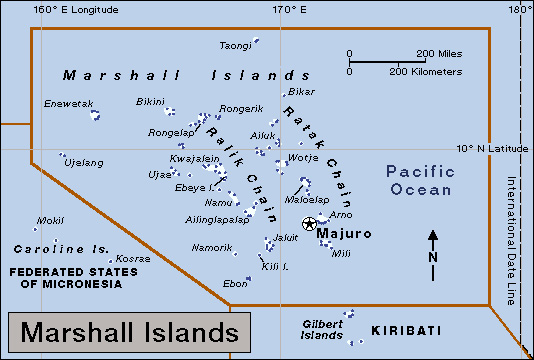Bikini << buh KEE nee >> Atoll is an isolated atoll (ring-shaped reef) in the northwest Marshall Islands group in the Pacific Ocean. Bikini’s approximately 54-mile (87-kilometer) length of reef encircles a lagoon. Large breaks in the reef allow ships to enter and exit the lagoon. There are 23 islets (tiny islands) on Bikini’s reef. The islets cover 2.32 square miles (6.01 square kilometers) of land and form a lagoon of 240 square miles (620 square kilometers).

After World War II ended in 1945, the United States moved the atoll’s population to Rongerik and later to Kili so it could use the atoll for nuclear bomb tests. After a preliminary cleanup of radioactive debris on the island in 1969, the United States announced that the radiation had been reduced to a safe level. In the early 1970’s, however, only a few families returned to the atoll. In 1978, the Bikinians won a lawsuit against the U.S. government, requiring that the United States conduct a scientific survey to determine if the atoll was fit for human life. That same year, United States officials announced that radiation levels on the atoll were not safe, and the people were resettled elsewhere. Lawsuits filed against the United States for damage to health and property have resulted in financial compensation for the Bikinians. In 1988, the U.S. government approved a $90 million trust fund to be paid to the Bikinians for the rehabilitation and resettlement of the atoll. Today, Bikini Atoll is a renowned scuba diving location.
